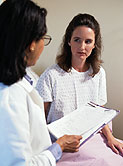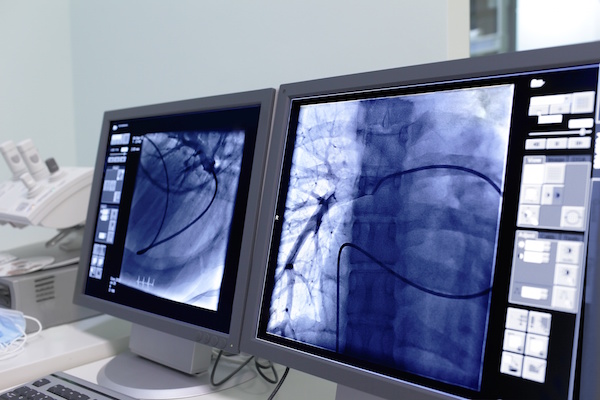
THURSDAY, Jan. 28 (HealthDay News) — Relying on symptoms alone to identify women who have ovarian cancer isn’t very effective at catching the disease early, a new study indicates.
Research shows that women with ovarian cancer are much more likely than healthy women to report symptoms such as abdominal pain, bloating, feeling full quickly after eating and urinary urgency, especially if the symptoms are relatively new and persistent, said study author Mary Anne Rossing, a member of the Program in Epidemiology at Fred Hutchinson Cancer Research Center in Seattle.
But because ovarian cancer is fairly rare, while the symptoms are relatively common and possibly explained by less serious conditions, the ability to predict who has cancer based on symptoms alone is limited, Rossing said.
Researchers found that for every 100 women in the general population whose symptoms matched those in a widely accepted ovarian cancer symptom index, only one would actually have early-stage ovarian cancer.
“The rarity of ovarian cancer in the general population results in the positive predictive value of these symptoms in detecting ovarian cancer as being quite low,” Rossing said.
The study is published in the Jan. 28 online issue of the Journal of the National Cancer Institute.
Finding ways to detect early-stage ovarian cancer is an ongoing challenge, said Cara Tenenbuam, vice president of policy and external affairs for the Ovarian Cancer National Alliance.
Ovarian cancer sometimes is found during a pelvic exam, but tumors are often too deep within the body for doctors to detect. In addition, the symptoms of ovarian cancer are often missed or misdiagnosed as other less serious conditions, including menopause, lactose intolerance, irritable bowel syndrome or even depression, Tenenbaum said
While nine of 10 women whose ovarian cancer is caught early are alive five years after diagnosis, only about 20 percent of ovarian cancers are found at their early stage, according to the American Cancer Society.
To address this, in 2007, three major cancer organizations — the American Cancer Society, the Gynecologic Cancer Foundation and the Society of Gynecologic Oncologists — released a consensus statement that included a constellation of symptoms women and their doctors should be aware of, including swelling of the stomach or bloating, pelvic pressure or stomach pain and trouble eating.
Rossing and her colleagues interviewed 812 women aged 35 to 74 who had epithelial ovarian cancer, the most common type of ovarian cancer, about their symptoms during the year leading up to diagnosis and compared them to 1,313 who didn’t have cancer.
Women who were diagnosed with cancer were 10 times more likely to experience the symptoms than women without cancer, according to the study. Among patients with early-stage disease, about 27 percent experienced the symptoms for at least five months before diagnosis.
Yet the symptoms aren’t much use in identifying cases of ovarian cancer in the general population because in 99 out of 100 cases, a women with the symptoms would not have ovarian cancer, Rossing said.
“We need to understand more about the benefits and risks for women who receive evaluations for ovarian cancer because of these symptoms,” Rossing said. “Risks may include the worry and expense of unnecessary testing, ultrasound and even unnecessary surgery.”
Last year, 21,550 new cases of ovarian cancer were diagnosed among U.S. women; 14,600 deaths were attributed to the disease.
In the absence of more precise screening techniques, Tenenbaum said women and their doctors should be aware of possible signs of ovarian cancer, and women should not hesitate to see their doctors if their symptoms are persistent or are clearly not how they usually feel.
“We talk a lot about symptom awareness, but what this study shows is we still need a reliable early detection test,” Tenenbaum said. “The symptoms index is the best we have right now for early detection. You need to know what’s normal for you. If it’s new for you and you’re not feeling good, we want you to have good access to medical care and to avail yourself of it.”
Meanwhile, scientists continue to experiment with better detection methods. According to a study in the February issue of the American Journal of Roentgenology, researchers are working on developing better early-stage cancer detection through the use of contrast-enhanced ultrasound combined with blood tests that look for tumor biomarkers.
More information
The Ovarian Cancer National Alliance has more on ovarian cancer and a downloadable symptom diary.

